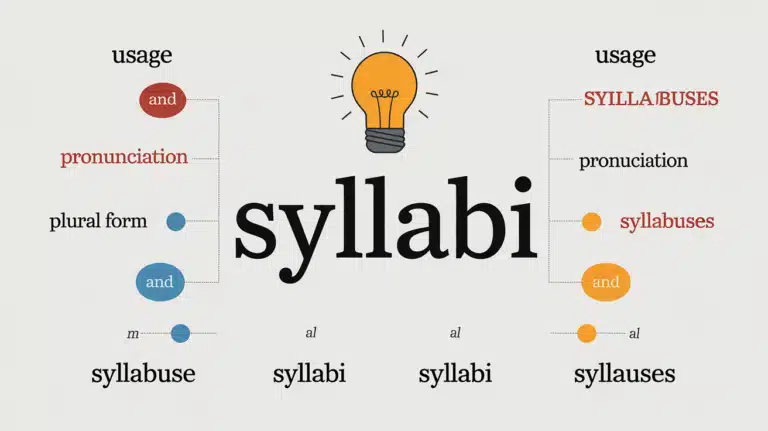The Plural of Status: Understanding the Grammar Puzzle
The word “status” might seem simple, but it often confuses people when it comes to making it plural. Is it “statuses,” or does it stay as “status”? If you’re unsure, you’re not alone! Let’s break down this grammar puzzle and uncover the answer together, exploring why it causes so much debate.
The Curious Case of “Status”: One Word, Two Plurals
At first glance, forming the plural of “status” might seem like a simple task. However, this Latin loanword presents us with a unique challenge: it has not one, but two accepted plural forms. This duality stems from the word’s Latin roots and its evolution in the English language.
Key fact: “Status” comes from the Latin word “stare,” meaning “to stand.”
The two plural forms of “status” are:
- Statuses
- Status (unchanged)
This linguistic quirk has led to countless grammar questions and debates among language professionals and everyday users alike.
Statuses vs. Status: Which One’s Correct?
When it comes to choosing between “statuses” and “status” as the plural form, both options are technically correct. However, their usage varies depending on context and style preferences.
Statuses: The Standard English Plural
“Statuses” is widely recognized as the standard English plural form of “status.” It follows the typical English pattern of adding “-es” to words ending in “-us.”
Example: “The social media platform allows users to post multiple statuses throughout the day.”
Status: The Less Common but Accepted Plural
Using “status” as both singular and plural (known as a zero plural) is less common but still accepted, especially in more formal or academic contexts.
Example: “The researchers examined the socioeconomic status of various demographic groups.”
| Form | Usage | Example |
|---|---|---|
| Statuses | Common in everyday language | “She updates her Facebook statuses hourly.” |
| Status | More formal, academic, or technical | “The status of the projects are reviewed weekly.” |
The History of “Status”: A Look Through Time
To truly understand the plural conundrum of “status,” we need to delve into its etymological roots.
- Latin Origin: “Status” comes from the Latin word “stare,” meaning “to stand.”
- Original Meaning: In Latin, it referred to a standing, position, or condition.
- English Adoption: The word entered English in the 16th century, retaining much of its Latin meaning.
Over time, “status” has evolved to encompass various meanings in English, from social standing to the state of affairs or conditions.
Fun fact: The phrase “status quo” literally means “the state in which” in Latin.
Why Does “Status” Have Two Plural Forms?
The dual plural nature of “status” can be attributed to several factors:
- Latin Influence: English has borrowed many words from Latin, often preserving their original plural forms.
- Anglicization: There’s a trend in English to adapt foreign words to more familiar patterns.
- Linguistic Evolution: Language changes over time, and plural forms can shift with usage.
Comparison with Other Latin-Origin Words
“Status” isn’t alone in its plural peculiarity. Consider these examples:
- Datum (singular) → Data (plural)
- Medium (singular) → Media (plural)
- Cactus (singular) → Cacti or Cactuses (plural)
These words showcase the ongoing tension between preserving Latin forms and adapting to English patterns.
Read More About : Cracking the Code: Solving the Plural Puzzle in Software
When to Use Each Plural Form
Choosing between “statuses” and “status” often depends on the context and formality of your writing.
Formal and Academic Contexts
In scholarly or professional writing, you might encounter “status” used as both singular and plural more frequently.
Example: “The study examined the economic status of various demographic groups.”
Informal and Everyday Usage
In casual conversation or social media, “statuses” is more commonly used.
Example: “I scrolled through my friend’s Facebook statuses for hours.”
Professional Fields
Some industries have specific preferences:
- Technology: “Statuses” is often used in software and social media contexts.
- Sociology: “Status” (plural) might be preferred when discussing social standing.
Pro tip: When in doubt, consult the style guide relevant to your field or publication.
Common Mistakes and How to Avoid Them
Even seasoned writers can stumble when dealing with the plural of “status.” Here are some common pitfalls to watch out for:
- Misuse of Apostrophes: Never use “status’s” as a plural form. This is incorrect.
- Inconsistency: Stick to one form throughout your document for clarity.
- Pronunciation Errors: “Statuses” is pronounced /ˈsteɪtəsɪz/, not /ˈsteɪtaɪ/.
Grammar tip: When in doubt, “statuses” is usually a safe choice in most contexts.
The Debate Among Linguists and Grammarians
The plural of “status” has been a topic of heated debate in linguistic circles. This discussion reflects broader questions about language evolution and standardization.
Prescriptivism vs. Descriptivism
- Prescriptivists argue for strict adherence to traditional grammar rules.
- Descriptivists believe language should be described as it’s actually used.
Quote: “Language is not an abstract construction of the learned, or of dictionary makers, but is something arising out of the work, needs, ties, joys, affections, tastes, of long generations of humanity, and has its bases broad and low, close to the ground.” – Walt Whitman
This debate highlights the dynamic nature of language and the challenges of maintaining grammar precision while acknowledging linguistic change.
“Status” in the Digital Age
The rise of social media has had a significant impact on how we use and perceive the word “status.”
Social Media Influence
Platforms like Facebook have popularized the term “status update,” leading to increased use of “statuses” in everyday language.
Example: “She posts multiple statuses daily, keeping her followers updated on her life.”
Tech Companies and Plural Forms
Many tech companies have adopted “statuses” in their user interfaces and documentation, further cementing its place in modern English usage.
Beyond English: “Status” in Other Languages
The plural conundrum of “status” isn’t unique to English. Other languages have their own approaches:
- French: le statut (singular) → les statuts (plural)
- German: der Status (singular) → die Status (plural)
- Spanish: el estatus (singular) → los estatus (plural)
This multilingual perspective reminds us of the diverse ways languages handle borrowed words and pluralization.
Mastering the Plural of “Status”: Tips and Tricks
To improve your grammar skills and confidently use the try these strategies:
- Context Awareness: Consider your audience and the formality of your writing.
- Consistency: Choose one form and stick to it throughout your document.
- Read Widely: Expose yourself to various writing styles to understand usage patterns.
- Practice: Use both forms in sentences to become comfortable with their nuances.
Exercise: Write five sentences using “statuses” and five using “status” as a plural. Compare how they sound and feel in different contexts.
Conclusion: Embracing Linguistic Flexibility
The plural of “status” serves as a fascinating case study in the evolution of language. While “statuses” has become the more common form in everyday English, the use of “status” as a plural remains valid in certain contexts. This duality reflects the rich tapestry of English, woven from various linguistic traditions and continually evolving.
As communicators, our goal should be clarity and effectiveness. Whether you choose “statuses” or “status” as your plural form, consistency and contextual appropriateness are key. Embrace the flexibility of language, but always strive for precision in your communication.
FAQs About the Plural of “Status”
Q: Is “stati” ever correct as a plural form of “status”?
A: No, “stati” is not a correct plural form of “status” in English. It’s a common misconception, likely arising from confusion with other Latin-derived words.
Q: Can I use “statuses” in formal writing?
A: Yes, “statuses” is widely accepted in formal writing. However, in very formal or academic contexts, some may prefer “status” as both singular and plural.
Q: How do style guides approach this issue?
A: Style guides vary. For example, AP Stylebook recommends “statuses,” while some academic style guides may prefer “status” as a plural in certain contexts. Always check the specific guide you’re following.
By understanding the nuances of “status” and its plural forms, you can navigate this grammatical challenge with confidence. Remember, language is a tool for communication, and mastering its intricacies enhances your ability to express ideas clearly and effectively.







